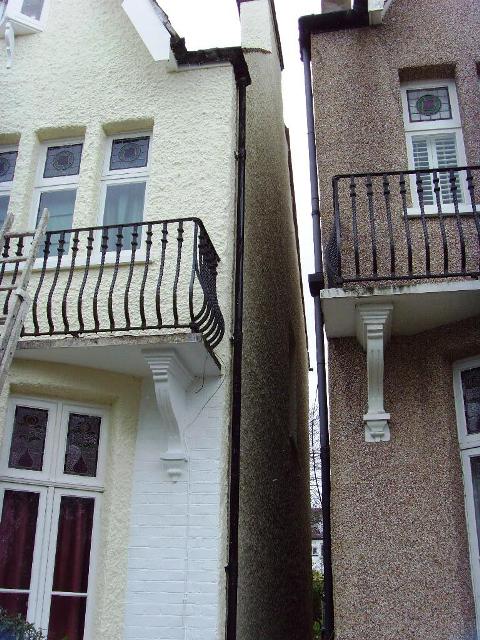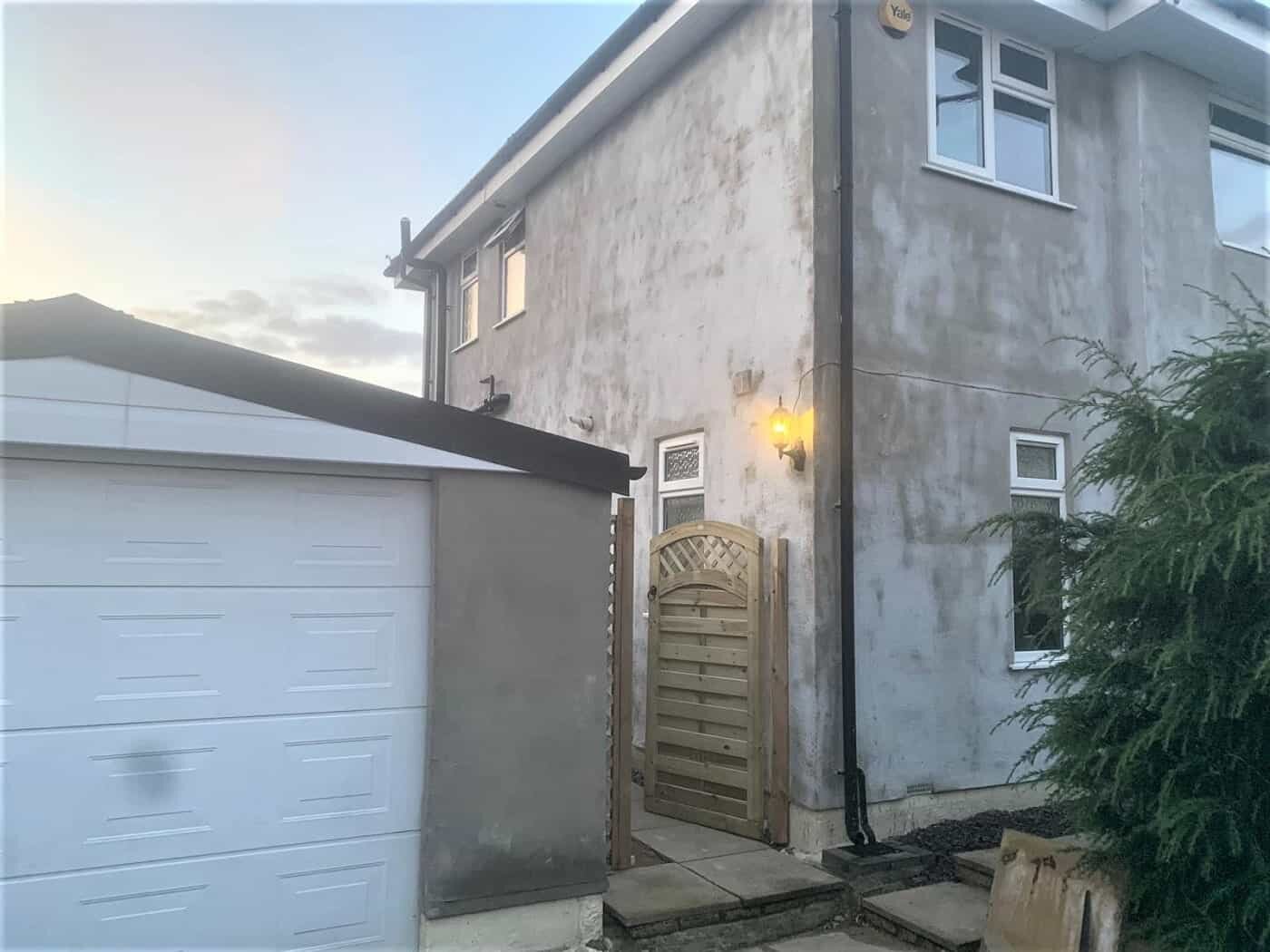Pebbledash covers much of the UK’s early to mid 20th century housing stock and was primarily invented to give a cheap, fairly weatherproof, low maintenance wall coating over poor quality brickwork.
Pebbledash, the traditional British (and Irish) version anyway, should last between 20 and 40 years.
Many of the older style homes that have this wall covering are now looking at the prospect of having it replaced or removed and replaced with something different, but what exactly?
The wall covering does not last for ever and at some point the homeowner will need to make some decision as to what to do with their pebble-dashed house. Making the right choice is paramount.
Let’s look at the typical problems with dashed houses, and then contrast them with available pebbledash solutions when the wall covering is “past it’s sell-by date”.
The big problem with pebbledash…
The big problem with pebbledash is that, in my own personal view, and as a surveyor since the early 90s, is that it doesn’t look good.
Many of our valued clients also agree with us on that…
This is why we are constantly getting calls and emails from people who own this type of house and are looking for help. Pebbledash solutions typically amounts to repair, replace or repair and cover with a spray applied exterior textured coating.

Original pebbledash, first seen on domestic houses in any number was during the housing boom after World War One. Homes needed to built quickly, with materials in short supply, they used pebbles, dredged up from the sea bed, which were then thrown (literally) by hand, onto wet mortar.
The bonus was it covered up poor quality bricks underneath and didn’t need to be painted afterwards. That is fine, if you like the look of this ugly stuff. But for those that don’t painting was a quick fix. But, painting causes another problem as once you’ve painted it once, you need to do it again every few years.
Another reason pebbledash was applied to so many homes was that after WW1 there was a huge skills shortage. Pebbledash was much easier to apply and took less skill than traditional stucco or sand and cement rendering which requires extensive training and experience to be able to do it properly.
Pebbledash, over time, loses the pebbles (just look at the base of the wall after heavy rain) and when that happens, it exposes the unpainted mortar underneath.
This will absorb the rain, and the water will stay in the wall. As the weather turns, the water inside the wall will freeze. As it turns solid, the water expands and causes cracks in the wall.
Once this process starts, it gets worse over the years. You’ll soon see more cracks and hollow patches of render where the wall covering is just “hanging” on the wall rather than being affixed to it.
This is when the house starts to see damp patches inside.
The repair of these areas is problematic as any builder will tell you. It you rip off and replace a bad patch of pebbledash, or you have an alteration to your house, the two areas (old and new) will never match up.

So what do you do? Repair or replace?
That’s the big question really. It’s something that people saddled with this wall covering on their property have to wrestle with when the time comes to do something about it.
Here are the most popular pebbledash solutions for your home:
1. Having it re-pebbledashed
Having it done again? You must be mad. But, many people think this is their only option.
A major drawback in having it done again is that it is not cheap and the results can be far from satisfactory. Although, that largely depends on who you choose to carry out the work.
Lots of modern day pebbledash is not pebbledash at all but spar dash. Instead of smooth, small pebbles, you get sharp flint chips on the wall, which although available in a variety of colours, it leaves a very harsh surface. If you have ever accidentally rubbed up against one of these walls, you will know it hurts.

2. Rendering the wall
If the home owner wants to completely get rid of the pebbledash, it can be rendered. This can be with a coloured render, which saves on repainting, or sand and cement render, which will need painting once it’s on the house.
A professional builder will remove all the old pebbledash and render over the bare bricks. However, a cowboy builder, will apply render over the top of the old pebbledash, which is a disaster waiting to happen.
Doing so puts extra stress on the mechanics of the house, seals in areas which will harbour damp, and also will make windows and doors hard to open.
That’s not what you want for your home.
3. Painting the pebbledash
You might choose to retain the actual dashed wall coating but want to paint it. Make sure that whoever does it carries out all the repairs needed, such as fixing cracks etc. before they even open a tin of paint.
Bear in mind that spray painting is more suited for this heavily textured surface, as opposed to brushes and rollers which just aren’t up to the job.

There is a whole method involved in painting pebbledash explained in a previous article.
Not everyone hates pebbledash though.
An article sometime ago on theguardian.com introduced some experts who noted that:
In attractiveness terms, the experts draw a key distinction between suburban, postwar examples – “slapdash pebbledash,” and “rough-cast rendering”, in which larger stones are applied to the walls, and then painted, a technique often found on coastal cottages. “In remote, weather-beaten places […] pebbledash is both stylish and sensible.”
They did note, however, that the original type of pebbledash, the pebbles we talked about at the start of this article, can be very difficult to remove. In some cases, removal can cause serious damage to what’s underneath. They continued by saying:
“[Pebbledash is] fine if it’s in keeping with the period of the house,” says Daren Haysom, manager of the Islington branch of Foxtons estate agents, “but if pebble-dash is done badly, or on a modern house, it can bring the value down.”
Source: Guardian.com
So what are you going to do now?
If your home has pebbledash on the outside and you are looking for solutions, give us a call or send us an email. Tell us about your home and we can suggest, for free, some painting pebbledash options that may be open to you.
All advice is free is with no obligation.
Having our team spray our durable exterior wall coating system onto your home means that for the next 20 years, we guarantee (in writing) that you will not need to repair or to repaint the outside.

